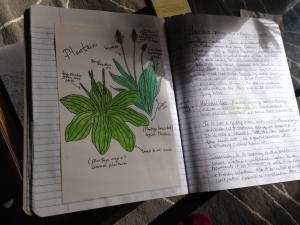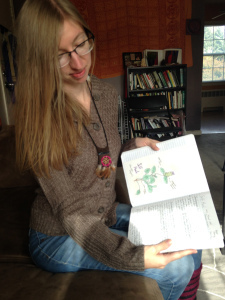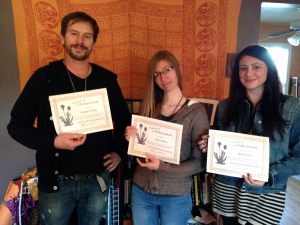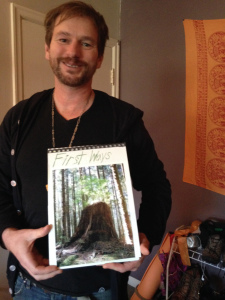Rebecca Lerner's Blog, page 2
November 24, 2015
Would you like to learn about wild plants in Portland this spring?
Have you ever wanted to learn to identify the local wild edible and medicinal plants of the Willamette Valley with an experienced guide, while having a tremendous amount of fun?
If so, then I think you will be excited to hear the latest news about my First Ways Herbal Apprenticeship program! Now in its second year, the 2016 program has been expanded to eight months, March through October 2016! We even have some guest teachers coming in!
[image error]What: 100 hours of very enjoyable, hands-on learning from spring to autumn that will turn you into a wild medicine-making folk herbalist, plant spirit healer, and urban forager with a heart connection to the wild plants of the Portland, Oregon, area. You will learn to:
* Identify 70+ local wild edible and medicinal plants in the urban and wilderness areas of Portland
* Feel confident making your own herbal medicines from scratch
* Select the right remedies to help friends and family feel better
* Discover or deepen your spiritual connection with herbs through guided group meditation
* Make new friends and go hiking with a fabulous community of like-minded people!
…And so much more!
Our focus is on firsthand experiential learning, so the vast majority of our time is spent outdoors doing hikes and plant identification walks, in which we are smelling, touching and tasting the plants where they live. We use our hearts to perceive their subtler energetic and metaphysical qualities. We cultivate our relations with nature in a very personal way.
How: We kick off with an overnight weekend retreat in early March, where you get your initiation into the apprenticeship and study the basics of herbal medicine. Then we meet twice per month (and sometimes thrice) to hike, meditate, or receive hands-on instruction on Saturday afternoons for three hours per class, around the full and new moons. The program is designed to give you the information and skills to use local wild herbs in your daily life, with great respect for nature, and while having a great time with amazing people! We have potluck parties and ceremonies to celebrate the equinoxes and summer solstice, too!
New for 2016: Guest teacher “Mushroom Jordan” Weiss will be joining us for amushroom identification hike this year! We will also be taking a field trip to learn about folk remedies with Laurie Lava, owner of Clary Sage Herbarium! (More news is on the way — stay tuned for more announcements!)
“The First Ways herbal apprenticeship was a gift to myself. I had many moments of reflection and peace during our many meditations, hikes and walks, made lovely new friends, and had lots of hands on experience and guidance meeting the plants in person, through the seasons. I feel much more confident foraging and making herbal medicine! I highly recommend this experience to anyone seeking to foster a deeper knowledge of and spiritual connection to plants.” – Chrissy, 2015 apprentice
“”The First Ways apprenticeship not only helped to open my eyes to the plant medicines that surround me, but also provided a warm, fun, non-judgmental community where I felt comfortable being myself and expressing my inner child.” – Kelly, 2015 apprentice
I am very lucky that the 2016 program has been attracting an incredible quality of participants: The warmest, kindest, most genuine-hearted, nature-loving, open-minded people who have a passion for experiential learning. I am excited for those are already enrolled and can’t wait to meet the rest! Are you one of them? Click here to learn more about the program and apply today.
Note: Space for our program in 2016 is limited because I am committed to keeping the group size intimate enough to ensure optimal enjoyment for all. Apply today, and save $300 when you enroll before Dec. 31, 2015!
October 26, 2015
Sweet Root, a Comforting Friend

Photo by Barry Breckling/Creative Commons license
I first met Sweet Root, Osmorhiza occidentalis, also known as Western Sweet Cicely, in a plant spirit workshop taught by Scott Kloos of the School of Forest Medicine in Portland a couple winters back. It was a great big group of people sitting together and meditating with herbs to get to know the spirit medicine and spirit personalities of plants — a very cool experience. There might have been sixty people there.
Scott taught us that the primary physical medicinal use for this plant was to assist digestion, and that it could counteract food intolerances if taken with the offending food. He classified it also as an anti-fungal herb useful for addressing candida.
Traditionally, indigenous tribes have used a decoction of the roots for gas pains and upset stomach, according to Native American Ethnobotany by Daniel Moerman. This book also lists many other uses for a root decoction including as an antiseptic wash for the eye and for “venereal sores”; externally as a poultice snakebite remedy; and internally for whooping cough, colds and pnuemonia,
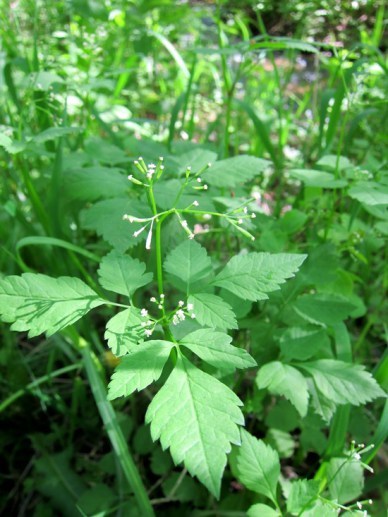
Photo by Mary Winter/Creative Commons license
What interested me personally most about Sweet Root is its spiritual healing properties. Through meditation, I observed that this plant has an affinity for assisting with issues held in the root chakra, the energy center at the very base of our torso that stores our attitudes and experiences to do with feeling safe, social belonging, connection to place, financial concerns, and groundedness. It has a very gentle, nurturing essence. I often work with it during my Plant Spirit Reiki sessions for people who feel uprooted or isolated, socially anxious, or unsure of where they stand in life. If this describes you, I recommend meditating with a taste of the tincture in your mouth, or meditating while holding a physical part of the plant, unless you are very sensitive and are accustomed to working with energies, in which case physical connection is not essential.
I have found and made medicine from what I believe to be the closely related species O. berteroi, also known as O. chilensis, in the forests around Portland. There are relatives of this plant elsewhere (different species, same genus) throughout all of North America and parts of South America as well.
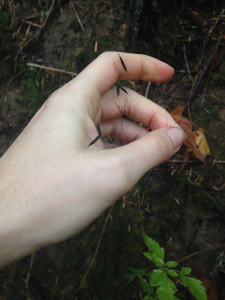
Sweet Root seed capsules
Sweet Root is in the Apiaceae family, also known as the carrot family, which includes Queen Anne’s lace (a.k.a. wild carrot), poison hemlock, angelica, and others.
The herb that I have seen is usually about a foot tall, but my field guides tell me it could theoretically grow up to a meter in height. It has leaves twice divided into three parts — look for nine leaflets, coarsely toothed — and most notably, the fruit are little black-brown elongated seed pods (which are green when young). When in flower, the blossoms are tiny and white. If you come across a plant you think may meet this description, you can crush and smell the seed pods, and if the scent is of anise, you have it right.
As the name suggests, the roots are the part that I tincture (in brandy). They are little taproots and not so easy to dig up, and not so easy to find either. It grows in wet places at low to middle elevations in the Cascades and Olympic Mountains. I usually find it in the shade or maybe with partial sun but never directly in the open. It’s does inhabit Forest Park, the largest city wilderness area here in Portland, but is fairly sparse.
***
I will be giving a free presentation on healing with local plant spirits of the area on Nov. 7 from 1 to 2 pm at the Body Mind Spirit Expo, at the Convention Center, which is 777 NE Martin Luther King Jr. BLVD, Portland, OR. The fee for admission to the expo is $12 at the door.
If you’d like to have your own experience meditating with plant spirits, consider applying for my herbal apprenticeship program, which goes March to October 2016. It’s tremendously fun! Here are a few of my wonderful graduates from the 2015 course, displaying their plant journals and certificates:
October 22, 2015
An Adventure with the Edible Yew!

The dogs playing on the magic side. Photo by Chrissy Miles
It was pouring rain when my apprentices and I explored the unfamiliar forest around the Collowash River. We were soaked, but we didn’t mind so much because of how beautiful our surroundings were.
“It’s like a joke!” Kelly said, speaking aloud our thoughts. We had just set up camp at a different spot that was nowhere near as stunning as this one. For one thing, that site was wide open to the pouring rain whereas here we were covered by the canopy. For another, everything over here looked brighter somehow. The colors were deeper and bolder. The river was a prettier shade of pale green and the plants were healthier. These sites were separated by a road, and were not more than 50 feet from each other, yet it was as if, simply by walking through a passageway on the other side of the road, we had been transported to a different dimension where everything was better.
Here the floor was soft and covered with the fallen needles of conifers. Our dogs leapt over giant moss-covered rocks and swam in the river and played. We wandered around this magical place and found wonder upon wonder: a frog hiding in a tree stump, and then a little green inch worm that danced. The inch worm was fascinating to us. It stood on one end and contorted itself.
“Will it dance to a beat?” I wondered. The others laughed.
I took a stick and rhythmically tapped the log on which the little inch worm was standing. It moved back and forth, but we decided that none of us knew enough — or anything, actually — about the habits of an inch worm to say for sure.

Yew bark, photo by Matthew White
We closed our eyes and communed with the energy of this beautiful place, and then we wandered again, stepping over fallen logs and rocks and slippery ground safely, helping each other navigate. Here we came upon an evergreen tree with smooth, scale-like, red-to-scarlet bark and little berries shaped like a hollow bell with a seed inside: Pacific Yew, Taxus brevifolia!
Yew berries are edible, though the seed inside is toxic, as are the leaves and other parts of this tree. Because we knew of the poisonous parts, we all felt a little apprehensive about tasting the fleshy red covering, called the aril. I and Matthew, who is ever adventurous, went first. “It’s good!” we exclaimed. The yew fruit was sweet and tasty, certainly among the most flavorful and worthwhile of wild foods I have tried.

Yew fruit! The red fleshy covering is called the aril and is edible. The seed inside, visible here, is poisonous to humans. Birds can eat the whole thing. Photo by Matthew White
Pacific Yew mainly lives in the understory of low to mid-elevation old-growth forests from southern Alaska through southern Washington, and in the coastal range of southern Oregon and into the Sierra Nevada mountains of California. It is also found in western Montana and northern Idaho, according to the US Forest Service, and occasionally but less commonly in the Cascade Range of Oregon. It grows in rainy places but is also found in drier habitats near streams.
The wood of Pacific Yew has been a traditional source of material for making paddles, spears, harpoon shafts, sewing needles, and other important resources for indigenous tribes of the Pacific Northwest. The bark of this tree has powerful medicinal compounds that are being researched by scientists and appear very promising for the treatment of many kinds of cancer, including ovarian, breast, and kidney. People from the Haida tribe reportedly believed that eating too much yew arils could make a person sterile, and interestingly, this is also a belief some Europeans have held in connection with European yew species, according to Plants of the Pacific Northwest Coast, a wonderful field guide edited by academic ethnobotanists. (That book is my must-have in the field!)
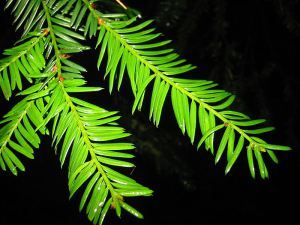
Pacific Yew needles / Photo by Walter Siegmund via WikiMedia
Neat trivia about the Pacific Yew: Like humans, individual yew trees may have just male reproductive parts, just female reproductive parts, both male and female parts, and in some cases, they change their sexual identity over time!
***
Does the idea of adventurously wandering around looking at plants with a fun, like-minded group of people sound appealing to you? If so, consider applying for the 2016 apprenticeship program, which begins in early March and continues through mid-October. We begin with a weekend retreat and then meet on Saturdays during these eight months. We focus on plant identification and uses, spiritual connection with herbs, DIY herbal medicine and edible plants, and together we become a beloved community of friends. The cost is significantly lower if you register by the end of December. I am currently accepting applicants. Have a look at the details here.
Thank you for reading. Happy foraging!
August 23, 2015
Licorice Fern: It Tastes Like It Sounds!
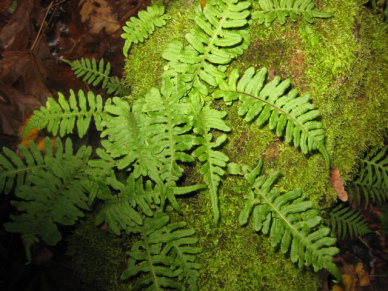
Licorice fern growing on a tree trunk
Licorice fern, Polypodium glycyrrhiza, has edible rhizomes that taste like you would expect: of anise! To be fair, there’s also some sour bitterness to the flavor, which means it is more palatable to chew them like forest gum and then spit them out when the flavor gets icky. Unlike most herbal medicines, which are taken internally via a tea of some kind, licorice fern is traditionally used the same way, by chewing the roots and swallowing the juice, then discarding them, according to ethnobotanist Nancy Turner, who has written that it’s got a history of traditional indigenous use as a sore-throat medicine.
Licorice fern is very easy to identify. It grows on deciduous tree trunks and fallen logs – typically maples — as well as in rock walls, rather than on the forest floor like other species. The fronds are similar in shape to sword fern but are much smaller, not much longer than a foot usually. They are connected by a network of horizontal roots, also known as rhizomes, which embed themselves snugly underneath a shallow carpet of dirt and moss. They hold on tight, so if you simply yank a frond, you’re more likely to snap it off than get the rhizomes you’re after. It works better to get your fingers underneath the moss and grab hold of the roots you want, then pull from there.
Rather than flowering and making seeds like most plants do, the ferns use a prehistoric reproduction strategy shared by mushrooms: They release spores. The underside of the leaves usually has visible orange dots on them called sori, which store them.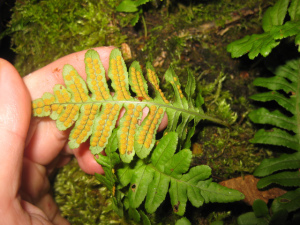
Licorice fern grows in forests throughout the western coast of North America from Arizona through Canada and Alaska.
***
Yes, if you are around the Portland, Oregon, area, you can hire me to help you identify the wild plants on your property, or for a private plant identification hike through a wilderness area! I offer these for individuals and groups of all ages.
And, if you are the type who would like to immerse yourself in plants, check out my herbal apprenticeship program. I am currently accepting applications for 2016. The 2015 class is loving it so much that, at their request, we are extending the program through October this year (it was originally going to end in August) and there are requests to let them repeat the course next year!
May 21, 2015
June Urban Foraging Workshop
Urban Foraging 101: Plant Identification & Meditation
Sunday, June 14, 2 pm to 5 pm
New Renaissance Bookshop
1338 NW 23rd Ave., Portland, OR 97210
This public workshop is a unique eco-journey through the urban wilderness of northwest Portland in which common weeds and trees are revealed to be food, medicine and poison. Our adventure will wind around the urban blocks surrounding New Renaissance Bookshop, eventually leading us back to the metaphysical store’s sacred event space, which is saturated with very positive energy. Here we will explore plant spirit healing work in a special guided meditation to meet plants in the non-physical realm. Here you will receive activations for your ability to commune with the plant spirit world and experience firsthand the wisdom and healing energy of these beautiful beings. This unique workshop is both an opportunity to connect with the plant world and also a chance to offer some much-needed healing energy to the Earth in the form of our attention, intention, and love.
Wear comfortable shoes. You may want to bring water and a snack, as well as a camera and notebook.
Fee: $40, reserve your spot by calling (503) 224-4929 or visiting the store. Drop-ins welcome if space allows.
Location: We begin and end class at the event center at New Renaissance. Visit NewRenBooks.com
Share this event invite on Facebook

May 10, 2015
New wild plant phone app is out!
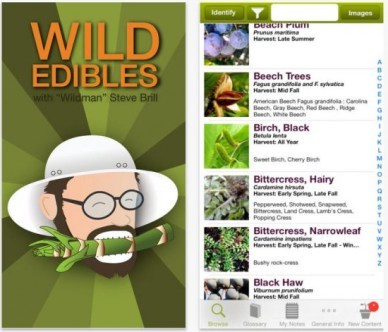
When “Wildman” Steve Brill reached out to me last year and invited me to contribute the Pacific Northwest plants to the newest version (2.1) of his excellent Wild Edibles iPhone and Android app, developed by WinterRoot, it was easy to say yes. I was excited and honored to be part of it. His app covers more than 200 useful plants and operates essentially as a field guide to common useful plants of North America, offering accurate information about the identification and uses of wild edible and medicinal plants of the urban and not-so-urban jungles at the touch of a button.
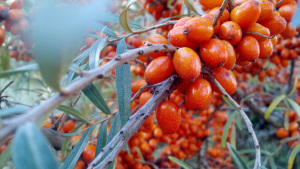
Sea-buckthorn is one of the many plants covered in this comprehensive app. While the tree is not native to the Pacific northwest, its edible berries can be found as an ornamental used in landscaping.
With contributions from myself, veteran urban forager and author Steve Brill and California survivalist and author Christopher Nyerges, you can trust it to be accurate and reliable. Safety is important when it comes to wild plants, and relying on this app is a nice alternative to using Google on your phone, because the search engine is crowd-sourcing information, and there’s plenty of inaccurate and parroted hearsay out there. Plus, it beats carrying around a bulky book in your bag.
The plants I contributed include: Oregon grape, fig, wapato, thimbleberry, strawberry tree (Arbutus unedo), sea-buckthorn, salmonberry, salal, little western bittercress, Indian plum, everlasting pea, emerald carpet, calendula, and lunaria.
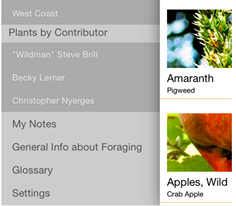
Check out more info on the app here. Version 2.1 is live and available for download here for iPhone and here for Android!
April 19, 2015
Wisteria Flower Pancakes!
 Wisteria is a beautiful, woody, ornamental vine blooming around Portland neighborhoods right now, and the gorgeous blossoms are edible! The flowers range from white to lilac to blue in color and have a structure typical of plants in the pea family, Fabaceae, with two banner petals fused together, and then two wings and a keel below. See the diagram below for an illustration.
Wisteria is a beautiful, woody, ornamental vine blooming around Portland neighborhoods right now, and the gorgeous blossoms are edible! The flowers range from white to lilac to blue in color and have a structure typical of plants in the pea family, Fabaceae, with two banner petals fused together, and then two wings and a keel below. See the diagram below for an illustration.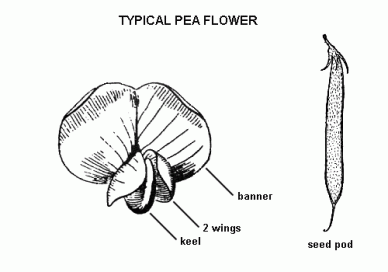
The flowers have a beautiful perfume-y floral scent and a tasty, light pea-like flavor. The seed pods produced by Wistera plants, however, are reportedly very poisonous and should not be ingested, according to Steve Brill, author of the excellent urban foraging guidebook Identifying and Harvesting Edible and Medicinal Plants in Wild (and Not So Wild) Places.
The leaves are alternate and pinnately compound.
There are 10 species of deciduous climbing vines in the Wisteria genus, which are native to China and Japan as well as the southern United States, where they can be invasive.
Today I picked some blossoms from a neighbor’s yard (with permission) and mixed them into a gluten-free pancake batter with some sliced strawberries. The finished product was very delicious and the blossoms cooked into a neat blue color in the pancakes, which was fun!
*** PRIVATE HIKES: If you are wondering what you can eat in your neighborhood or would like a guided tour of the edible and medicinal plants of the wilderness, urban or forest, I am available for private hikes and home visits. My clients include corporate groups, homeschool children, eco-tourists, foodies, herbalists, and more. For further info, click here.
PRIVATE HIKES: If you are wondering what you can eat in your neighborhood or would like a guided tour of the edible and medicinal plants of the wilderness, urban or forest, I am available for private hikes and home visits. My clients include corporate groups, homeschool children, eco-tourists, foodies, herbalists, and more. For further info, click here.
PLANT SPIRIT HEALING: I will be the guest healer at New Renaissance Bookshop, 1338 NW 23rd Ave. in Portland, Oregon, on Sunday April 26 from 3:30 to 7:30 pm offering my special healing magic, Plant Spirit Reiki, a combination of Usui Reiki energy work with plant spirit herbalism. Reiki is wonderful at reducing stress and clearing emotional and physical pain. Stop by and say hello or call the store in advance to schedule a private session with me at (503) 224-4929.
Happy foraging!
March 27, 2015
Spring News
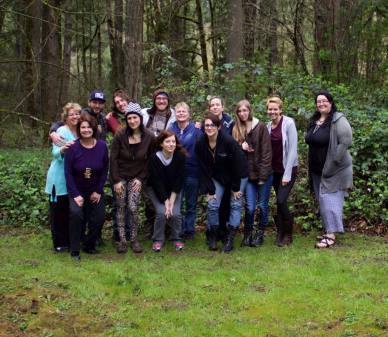 This past weekend was the spring equinox and I got to spend it playing in the woods with my 12 amazing apprentices in the brand new First Ways Herbal Apprenticeship Program! We went on plant walks, sat in magical plant spirit meditation with cleavers (Gallum aparine), wild harvested stinging nettle together and turned it into pesto, made passionflower tincture, smoked mullein, and enjoyed transformative drum-infused fire ceremonies at the cozy Still Meadows Retreat Center together. It could not have been more magical! My beloved students said our time together was “like a 36-hour party packed with information.” It was one of the most enjoyable adventures of my life for sure! Over the course of the next six months, we’ll meet around the new and full moons for plant identification walks and meditations, and my students will challenge themselves to gain personal experience foraging or making medicines with 30 new plants! I will join them in this challenge through my blog.
This past weekend was the spring equinox and I got to spend it playing in the woods with my 12 amazing apprentices in the brand new First Ways Herbal Apprenticeship Program! We went on plant walks, sat in magical plant spirit meditation with cleavers (Gallum aparine), wild harvested stinging nettle together and turned it into pesto, made passionflower tincture, smoked mullein, and enjoyed transformative drum-infused fire ceremonies at the cozy Still Meadows Retreat Center together. It could not have been more magical! My beloved students said our time together was “like a 36-hour party packed with information.” It was one of the most enjoyable adventures of my life for sure! Over the course of the next six months, we’ll meet around the new and full moons for plant identification walks and meditations, and my students will challenge themselves to gain personal experience foraging or making medicines with 30 new plants! I will join them in this challenge through my blog.
One of the important messages that came through in our ceremonies was that in honoring the plants, we help heal the Earth. Healing energy is made of love. When we gift the plants our love and respect, we empower and heal them as they empower and heal us. Through doing this we gain greater connection, gratitude, respect, and love for the Earth. As we walk the medicine path with her, we find ourselves receiving her love and respect, too. To feel respected and loved by the Earth is an indescribably fulfilling and joyous feeling, the highest honor for a person walking this path. We honor the plants, the children of the Earth, and we allow ourselves to be honored by them, too. It’s amazing, amazing work. And as I told my apprentices, this kind of “work” is meant to be fun, arising from a sense of celebration and exploration. So if it ever isn’t fun, you’re doing it wrong.
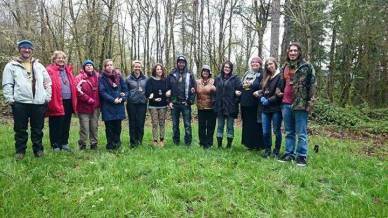
Right after their initiation ceremony!
Recently I also had the honor of writing an article about Usnea lichen, aka Old Man’s Beard, a potent lung medicine, for the Wild Edible Notebook, a high-quality publication electronically distributed by the very talented writer and foraging expert Erica Marciniec of WildFoodGirl.com. Everyone into edible plants should check her publication out; it’s dirt cheap at only $1.99/month to subscribe and packed with valuable info. You can preview the latest issue here.
More plant posts here on First Ways will be coming soon! In the meantime, now that the weather is very warm here in Portland, I am back to leading private plant identification hikes for groups and individuals in the Portland, Oregon, area. I love doing these fun walks in the wilderness and urban areas. I can come to your home and help you figure out what’s on your property, too! For more information and testimonials, visit my Private Hikes page here.
I have some upcoming public classes which are metaphysical/meditation-based coming up in April and May at New Renaissance Bookshop and The Float Shoppe, both lovely places in Portland, Oregon. One class is designed to empower you to love yourself more deeply; the other is a three-part mystical series for infusing yourself with the good vibes of Buddha, Kuan Yin, and Yogananda. For more information on these, please visit my spirit website PlantSpiritReiki.com That website is also the spot to find out more about receiving spirit healing work with me. I use plant spirit herbalism, Reiki, and sacred drumming to clear pain and help people feel amazing.
How has spring launched in your life?
November 21, 2014
Quiz: Which Plant Is Calling You?
Look at the photos below and pick the plant or plants you feel most drawn to, and then scroll down to find out what it’s telling you. Each of these plants has an area of expertise in spirit healing so the one you pick is standing out to you for a reason.
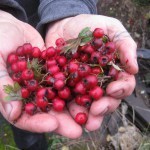
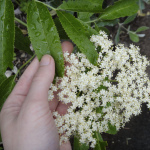

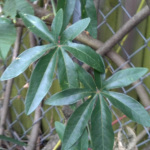
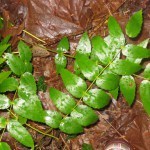
—
1. Stinging Nettle – If you picked this plant, you have energy blockages in your throat chakra that are interfering with your ability to honestly express yourself to others as well as to yourself. Are you able to say NO to requests, demands or situations that are not good for you? To heal and balance your throat chakra, get some stinging nettle in any form (tincture, tea, capsule, etc) and meditate with the plant, asking it to help you.
2. Hawthorn – If you picked this plant, your heart needs some healing at this time. In particular, you may be grieving a loss. Whether past or present, it is affecting you. Call upon this plant to mend your heart and help you release energies of sadness. This plant will protect your heart as well.
3. Elder – You are going through a life transition at this time. Elder will help guide you as move from one way of being to another, such as a move to a new home or job, entering or exiting a relationship, having a child or losing a parent. Elder lives in firmly in the spirit world and firmly in the physical world, bridging day and night, and also shows up when someone who has passed over would like your attention.
4. Western Red Cedar – The challenges you are facing right now are directly linked to a childhood trauma. Our soul calls situations to us to trigger old pains so that we can heal them. Cedar will lovingly nurture and protect your inner child back to health and wellbeing if you call on her.
5. Passionflower – You are being guided to stop striving to make things happen, and instead make space for Spirit to bring you what you need. This is a good time to meditate and practice the old adage, “Don’t just do something, sit there.”
6. Oregon Grape – Your life force energy is blocked in your liver, which means you have some anger and frustration you need to release. This is a good time to exercise, write, or work on a creative project.
Want to know more? Come to my “Meet Your Plant Spirit Allies” class on Monday Dec. 8 at Healing Waters & Sacred Spaces, NE 24th & Broadway in Portland, Oregon! Class goes from 7 to 9 pm and costs $25. We’ll be talking about the how of healing with plant spirits.
If you want to know how to work with plants and you don’t live near Portland, Oregon, you can download a recorded version of that class here.
The information above comes from personal, firsthand experience meditating with the herbs and working with them to help my clients feel better emotionally, mentally and physically with Plant Spirit Reiki. You can get your very own personalized one-on-one plant spirit healing experience with me in-person or via video chat/phone sessions. Visit my site PlantSpiritReiki.com to learn more about that, including testimonials and rates.
November 6, 2014
Announcing the First Ways Herbal Apprenticeship!
Do you feel the call to return to nature and heal your tribe? The brand new First Ways Herbal Apprenticeship launches this spring and goes March through August 2015!
What: A 50-hour, six-month program to turn you into a wild medicine-making folk herbalist, plant spirit healer, and urban forager with a heart connection to the wild plants of the Portland, Oregon, area. By the end of the program, you will be able to:
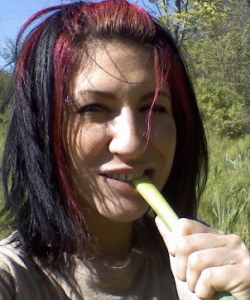 * Identify at least 35 wild plants (likely many more), harvest and prepare them as food and medicine
* Identify at least 35 wild plants (likely many more), harvest and prepare them as food and medicine
* Feel confident making your own herbal medicines from scratch
* Select the right remedies to help friends and family feel better
* Work with 15 herbs for spiritual and emotional support
Our focus is on firsthand experiential learning, so we w
on’t be sitting in classrooms listening to lectures. We go out into the wilderness and smell, touch and taste the plants where they live. We gather them and dry them and make them into food and medicine from scratch. We use our hearts to perceive their subtler energetic and metaphysical qualities. We cultivate our relations with nature in a very personal way.
How: We kick off with an overnight weekend intensive at a lovely retreat center on the spring equinox, where you get your initiation into the apprenticeship. Then we meet twice per month (and sometimes thrice) on Friday afternoons March through August, around the new moon to go on a wildcrafting hike where we learn to identify the plants and their uses, and around the full moon to commune with the plant spirits in group meditation, learning their metaphysical properties firsthand. We have potlucks and social gatherings, too!
To learn more and apply, visit FirstWays.com/Apprenticeship/


